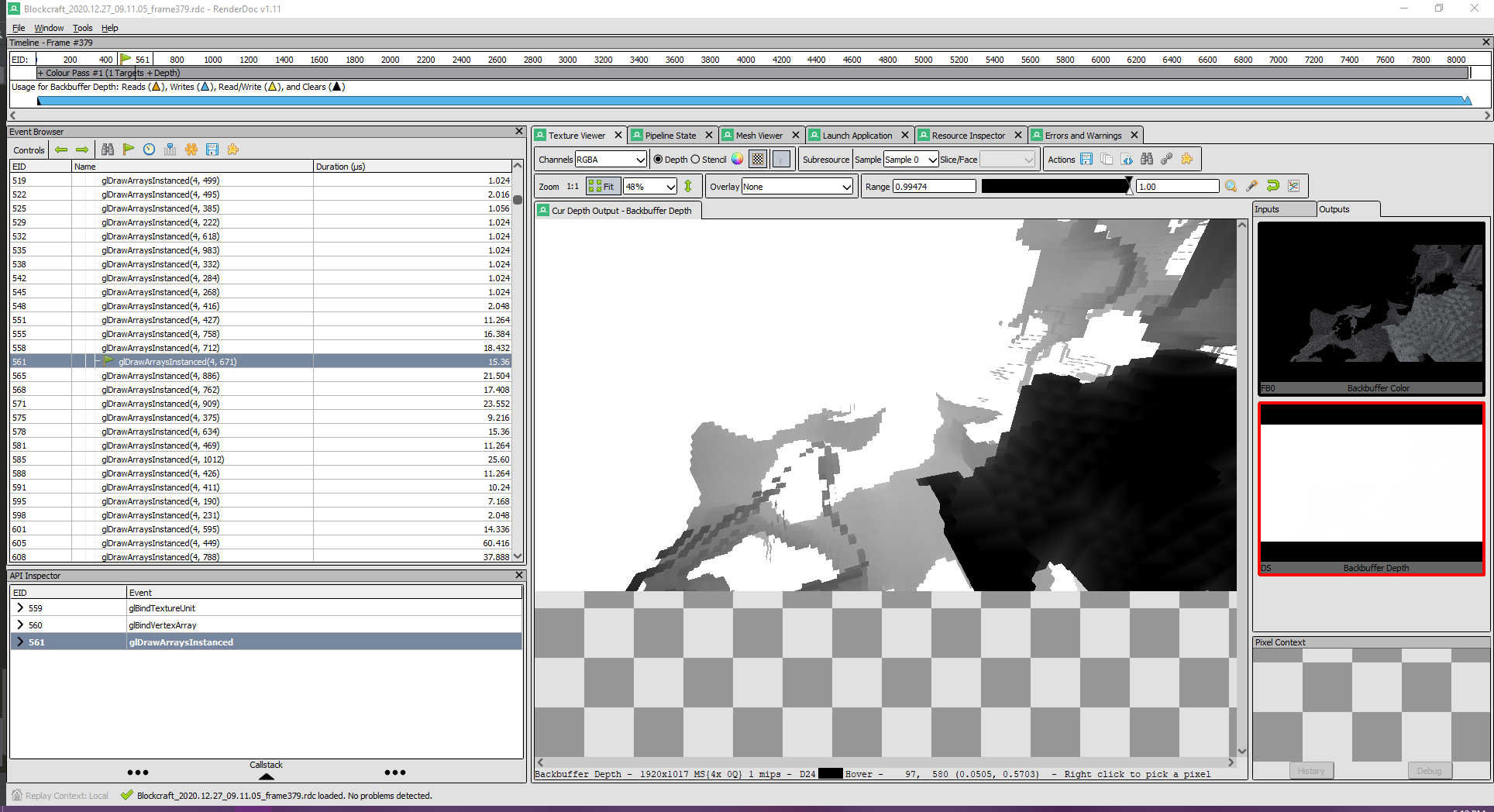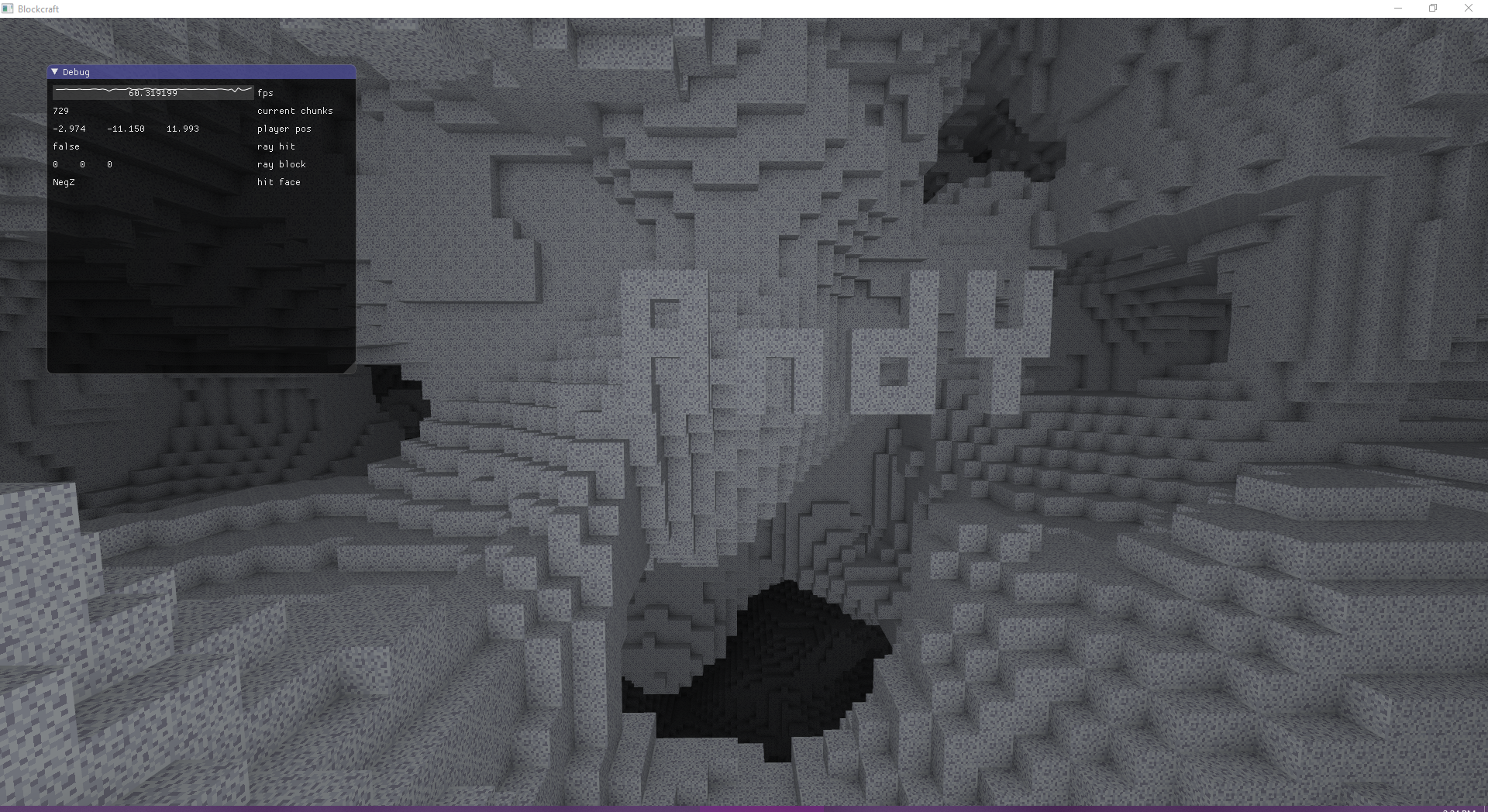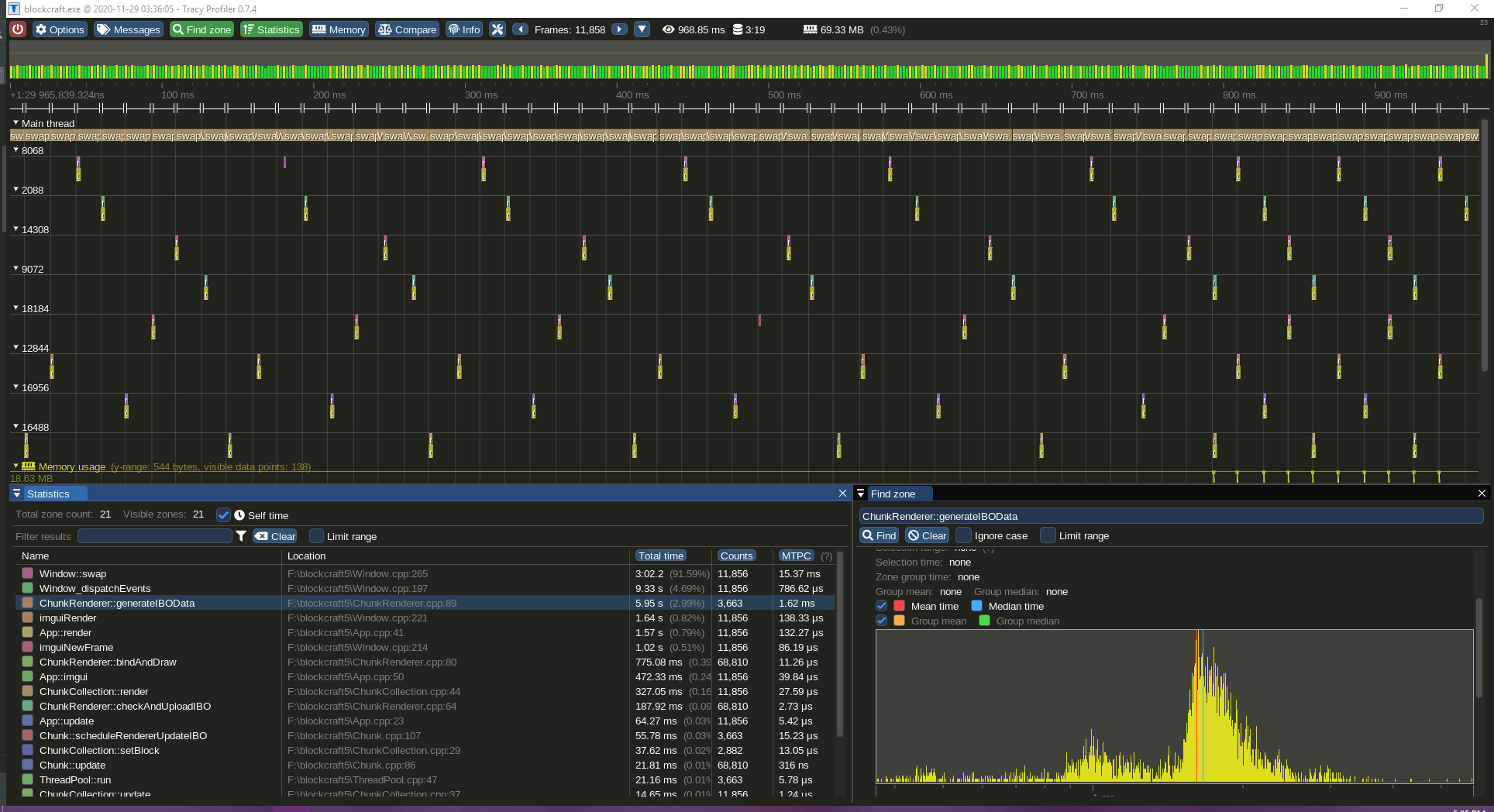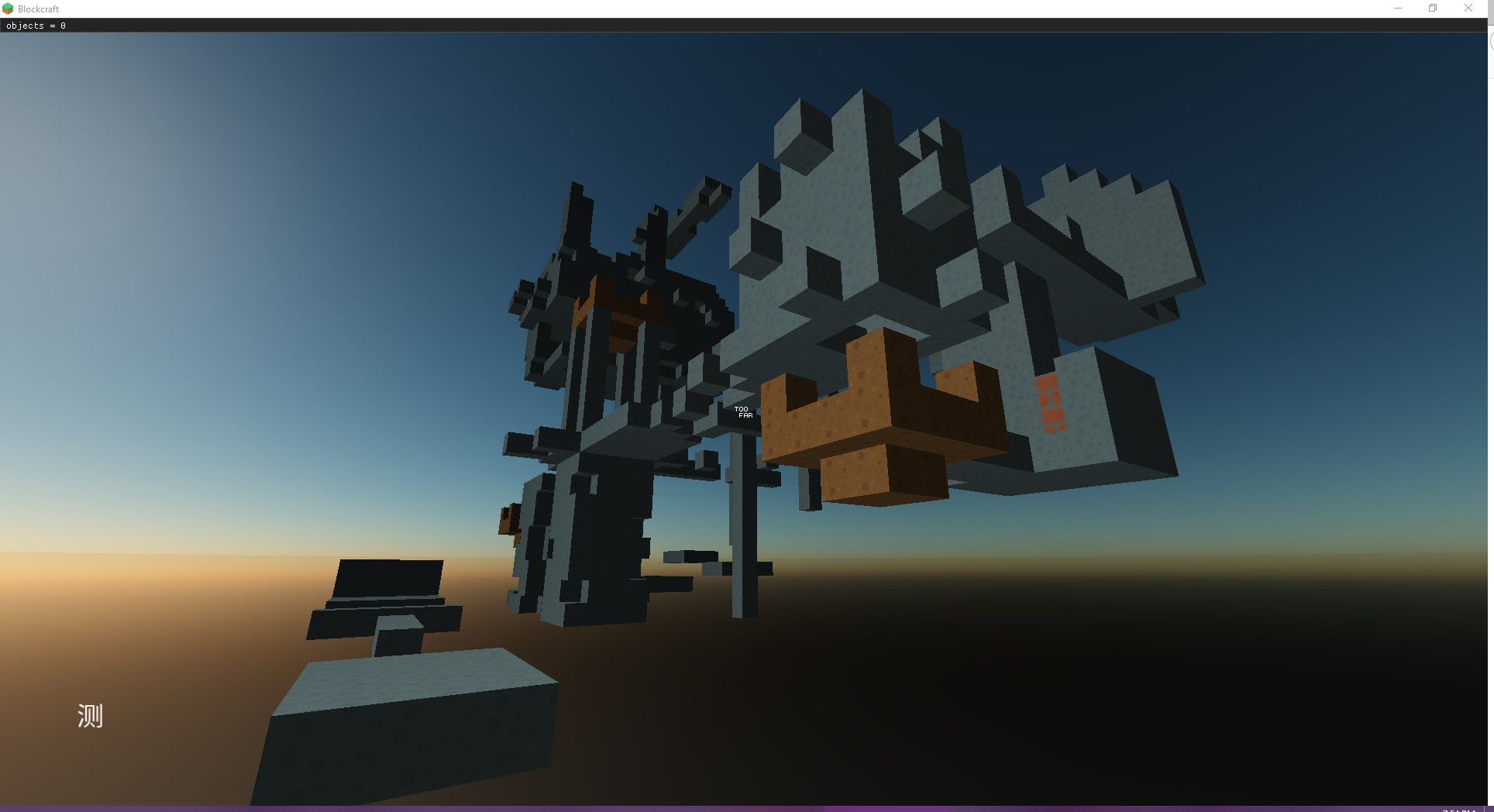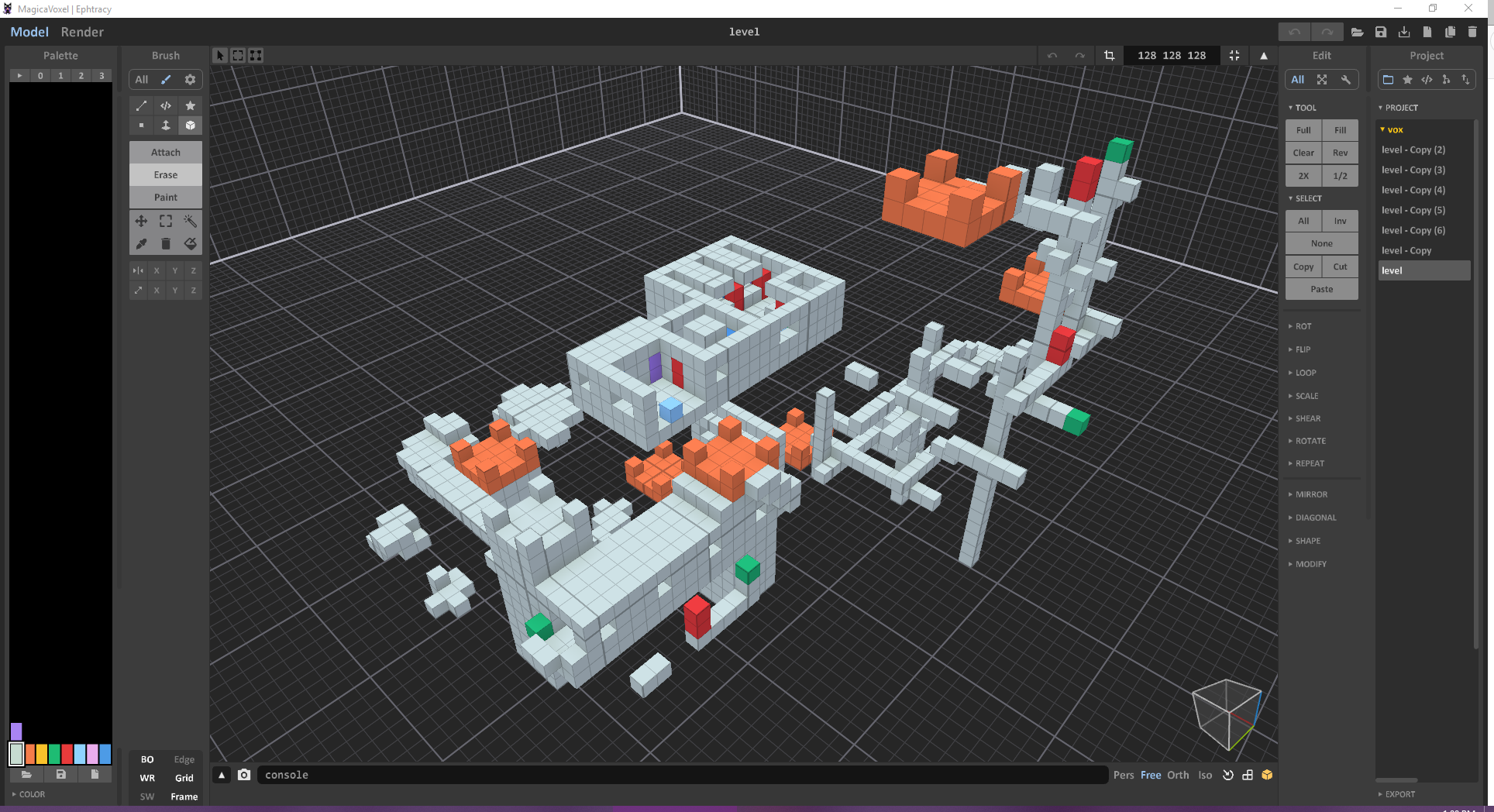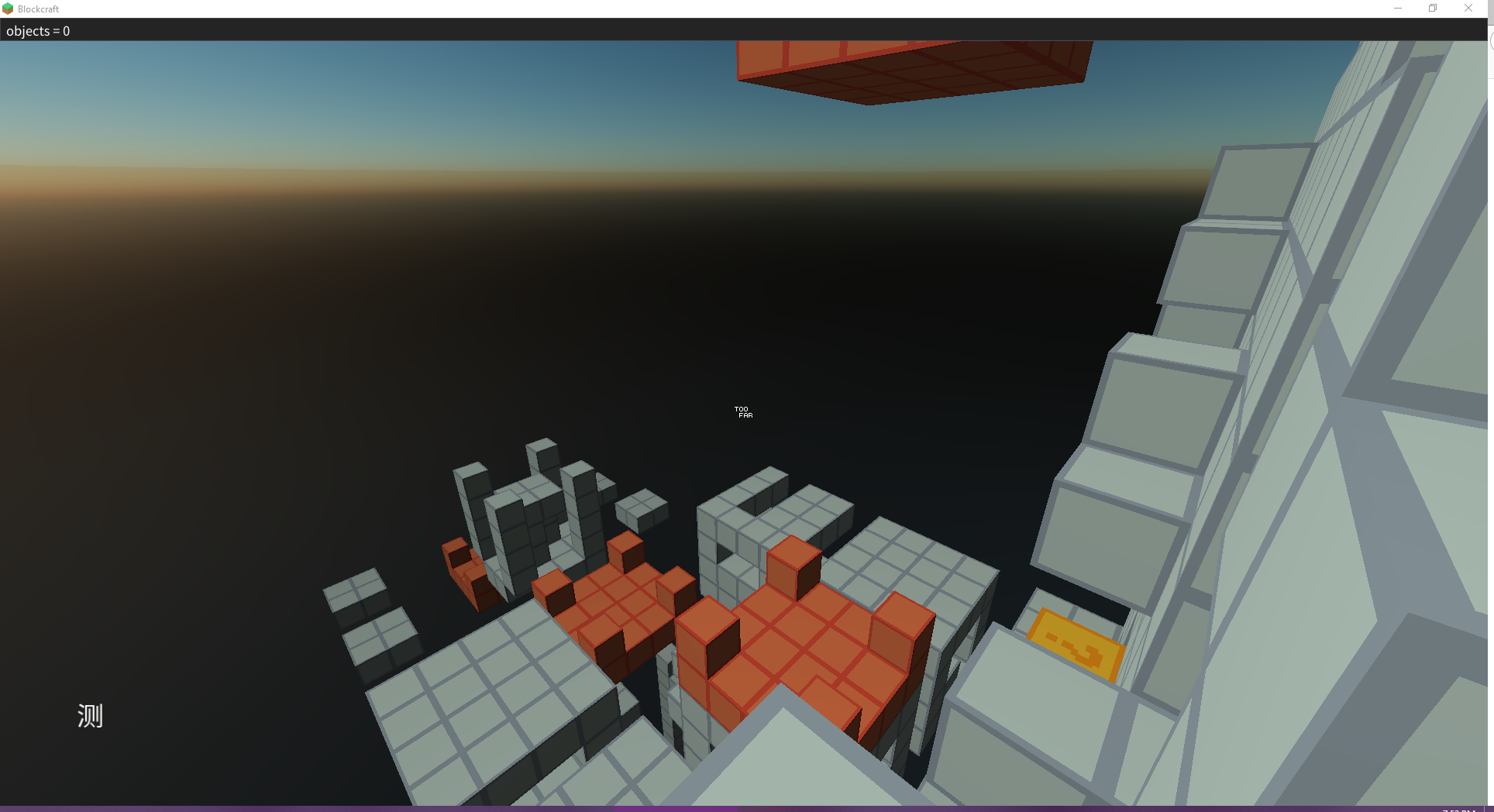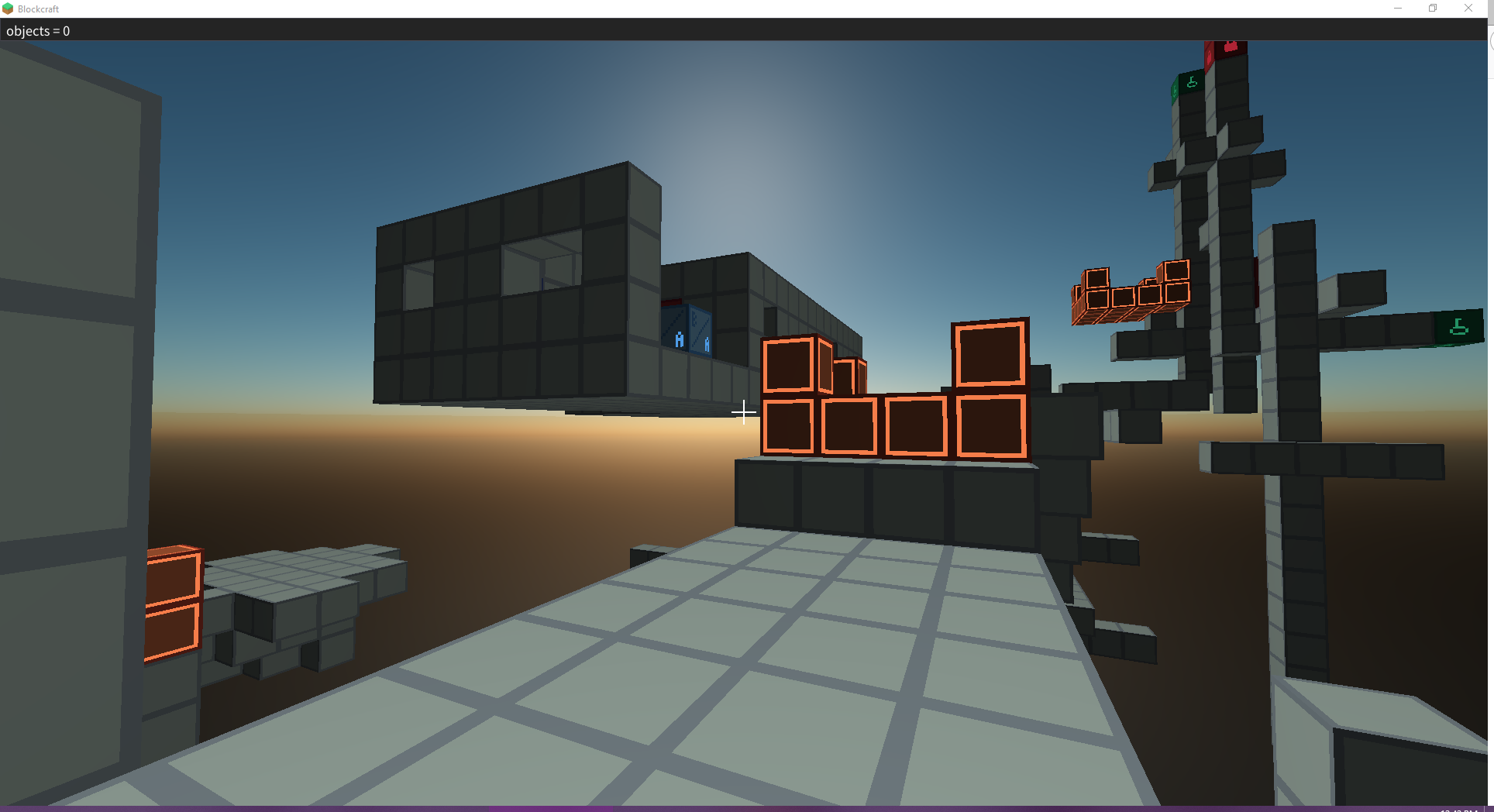This is one of my early projects.
Check this GitHub repo for engine/game builds.
A multi-threaded Minecraft-like voxel game engine with infinite world support, and a plaforming game made with the engine.
Highlights
Features
- Modern OpenGL renderer (4.6 Core Profile, Direct State Access)
- Infinite voxel world support
- Multi-threaded chunk update
- Custom voxel map physics
- FMOD integration
- Use MagicaVoxel for level editing
Quirks
- Requires AVX2 instruction set support for SIMD
- Might not work with Intel integrated graphics because their drivers have problems with Direct State Access
Demo videos
Voxel Platforming Game Demo
Basic Block Editing Demo
Play Instructions
return to main menu: esc
FreeFall mode
horizontal movement: WASD
jump: space
interact: left click
orange blocks are save points
green blocks unlocks the red blocks
blue/pink blocks can switch on/off blocks of corresponding color
Playground mode
horizontal movement: WASD
ascend: Q
descend: E
destroy block: left click
create block: right click
Engine Version History
graph TD
V1((Version 1)) --> V2((Version 2))
V1 --> Basic[Basic Voxel World Rendering]
V2 --> DirectGL[OpenGL C++ Wrapper]
V2 --> Chunk[Chunk System]
V2 --> WorldGen[World Generation]
V2 --> V3((Version 3))
V3 --> V4((Version 4))
V3 --> FakeAO[Voxel Ambient Occlusion]
V3 --> Physics[Csutom Physics]
V4 --> Particles[Particle System]
V4 --> FMOD[FMOD Integration]
V4 --> V5((Version 5))
V5 --> Magica[MagicaVoxel Level Editing]
V5 --> Graphics[Graphics Upgrade]
V5 --> Movement[Platformer Movement]
Version 1: Voxel rendering
Version 1 was created a long time ago and I lost the source files for this version.
It was just some basic voxel world rendering written with the magnum framework.
Version 2: Chunk-based world
One of the biggest goal of this project for me was to learn modern OpenGL, so I decided to drop other frameworks and write my own OpenGL wrapper.
This version supports:
- Infinite voxel world support
- Instead of Minecraft-like 16x16x256 chunk, I chose 32x32x32 chunk (Now I know this is a dumb choice)
- Multi-threaded chunk update
- Worker threads for chunk updating and voxel face culling
- Main thread for uploading to GPU
- Perlin noise based world generation
A small story about STL and cross-platform consistency
Back then I used a Perlin noise library for world generation, but when I tested it on multiple platforms, the same seed generates different worlds.
- World A
- Windows + MinGW GCC
- Linux + GCC
- World B
- Windows + MSVC
Since the library is the same, there must be something wrong with the standard library. At first I thought maybe std::mersenne_twister_engine would behave differently on different platforms, but that wasn’t the case. The real bug was from BasicPerlinNoise::reseed()
As you may know, Perlin noise algorithm has a bootstrap step which involves shuffling an array. Back when I was writing Version 2, this function looks like this:
std::shuffle(std::begin(p), std::begin(p) + 256, std::default_random_engine(seed));
However, std::shuffle is implemented differently in GCC and MSVC! If you take a look at the standard libraries source code of those two compilers, they both use the Knuth shuffle algorithm, but there are two variants(iterating forward and backward), which produce different results.
So the solution was obvious for me: I wrote my own shuffle().
That Perlin noise library has fixed it now: perlin_detail::Shuffle(m_permutation.begin(), m_permutation.end(), std::forward<URBG>(urbg));
I have absolutely no idea why I didn’t submit a pull request back then.
I began to use RenderDoc to debug my graphics code in this version, which was a great tool.
Version 3: Fake Ambient Occlusion & Custom Voxel Physics
In this version, I implemented a fake ambient occlusion effect. This technique was too verbose to set up and introduces tons of problems when generating chunks (it requires accessing neighbouring chunks frequently, which is a huge pain for multi-threading). I didn’t migrate it to the next version.
It looked nice, though.
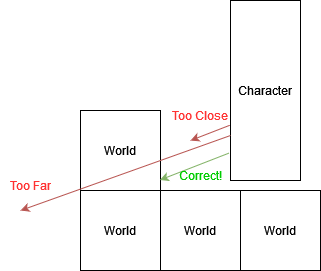
The physics engine is a simple custom one written from scratch. I didn’t have any experience implementing a physics engine before. So it doesn’t contain any fancy stuff like broad/narrow phases, and it only supports collision detection and ray-casting.
The character controller is a kinematic controller with an AABB collider. It used preventive collision detection (try to stop the object before colliding) with binary search, which wasn’t a very great choice. Now I know there are other ways (like allowing objects to penetrate each other and fixing those later), but it worked well enough for me back then.
Also, starting from this version I began to use Tracy to monitor the game performance.
Version 4: The Game
At this point the engine is basically capable of making a game, so I started to make a Minecraft clone with stuff like infinite caves, mining, crafting equipments, etc.
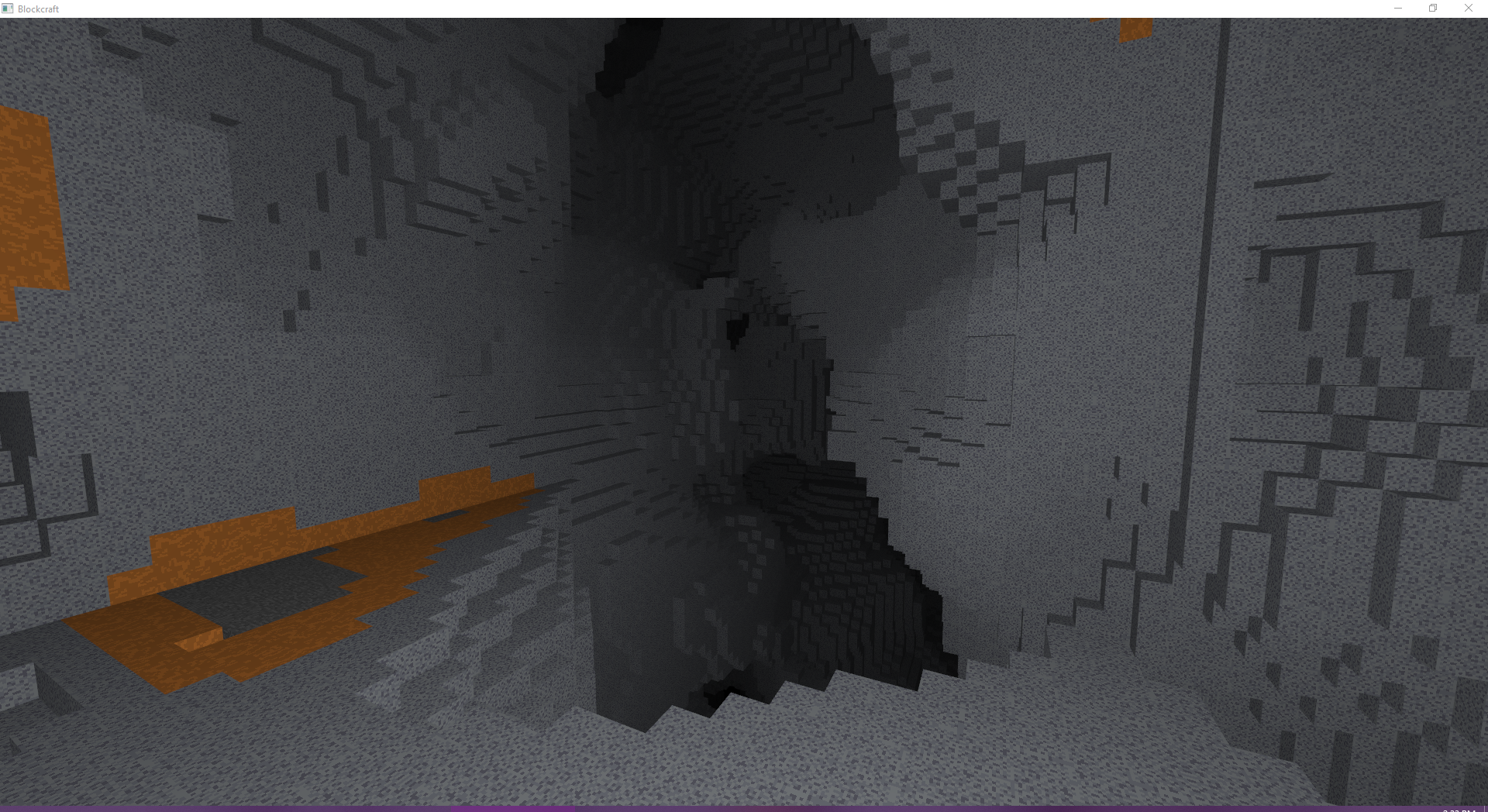
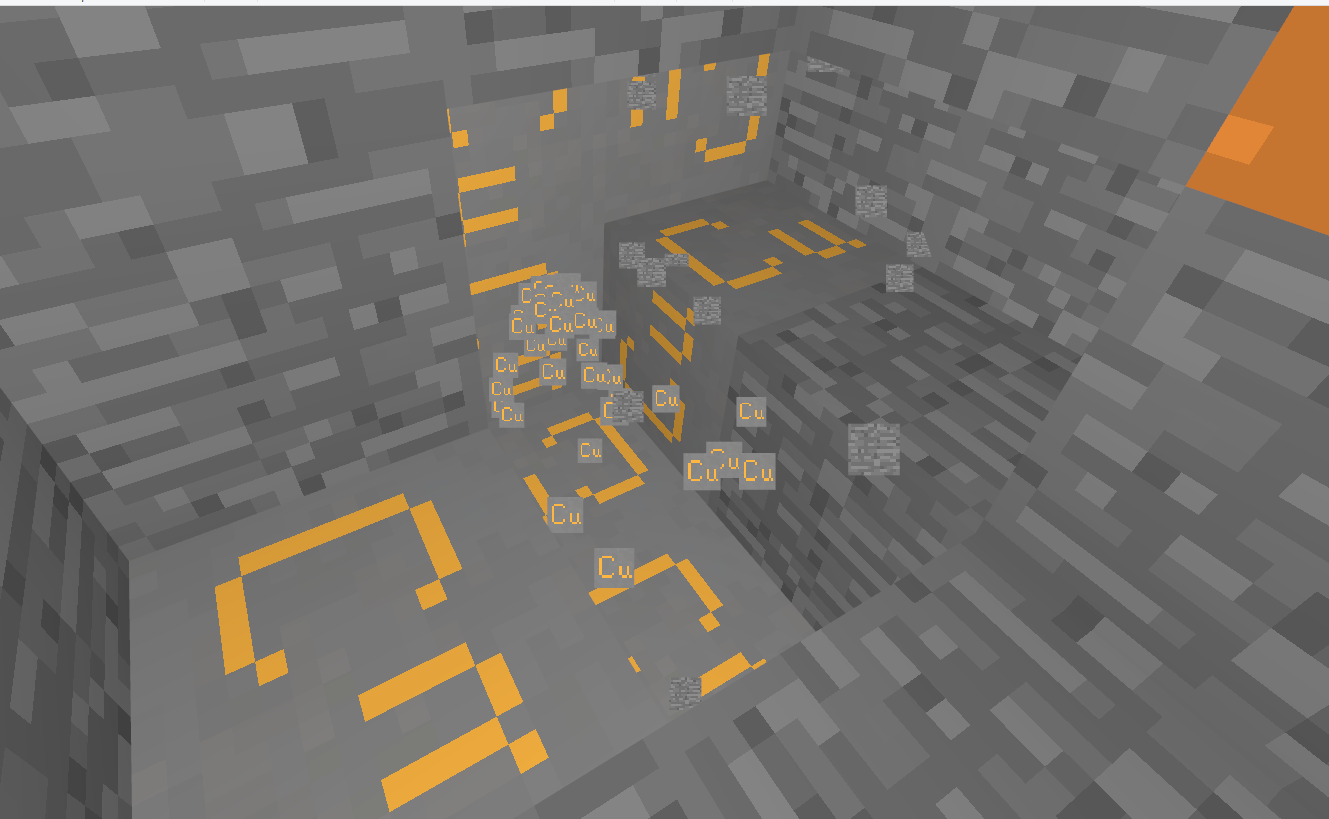
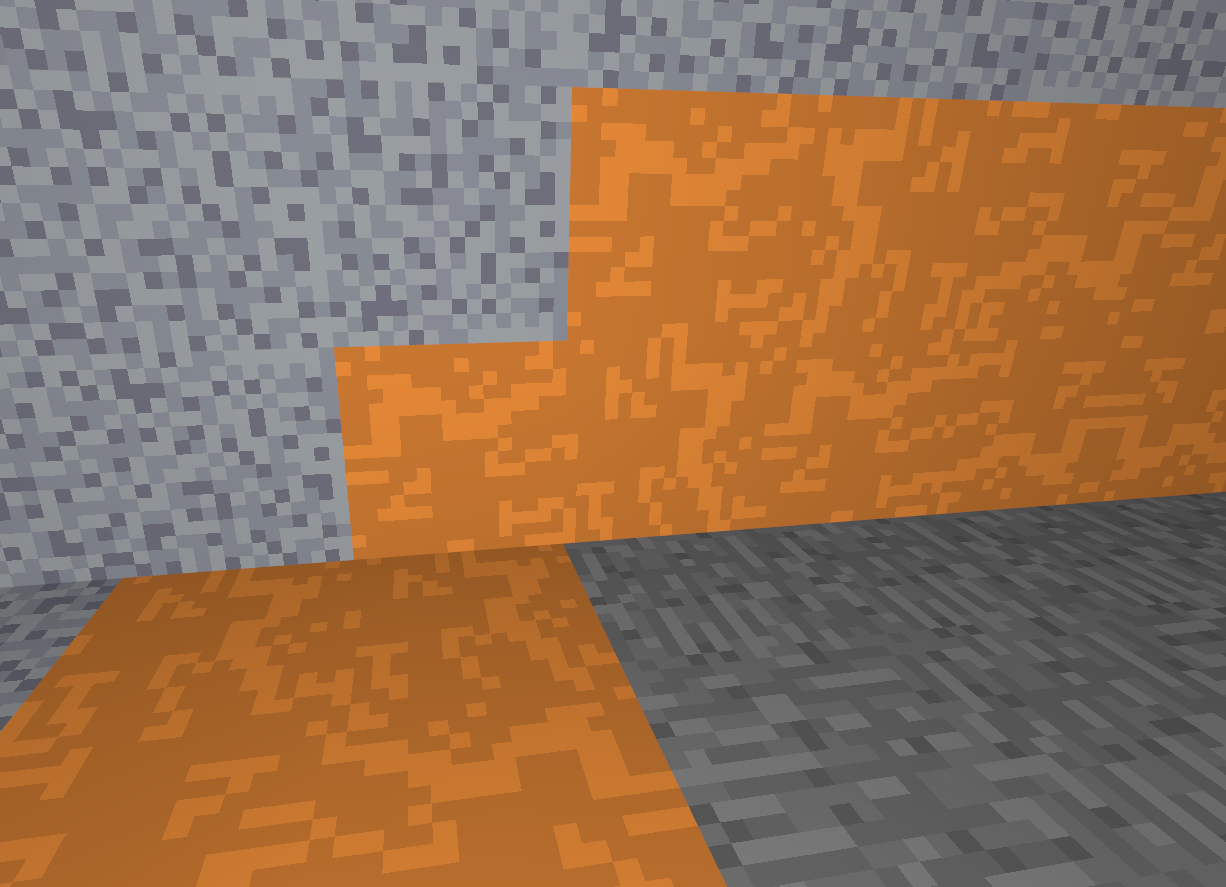
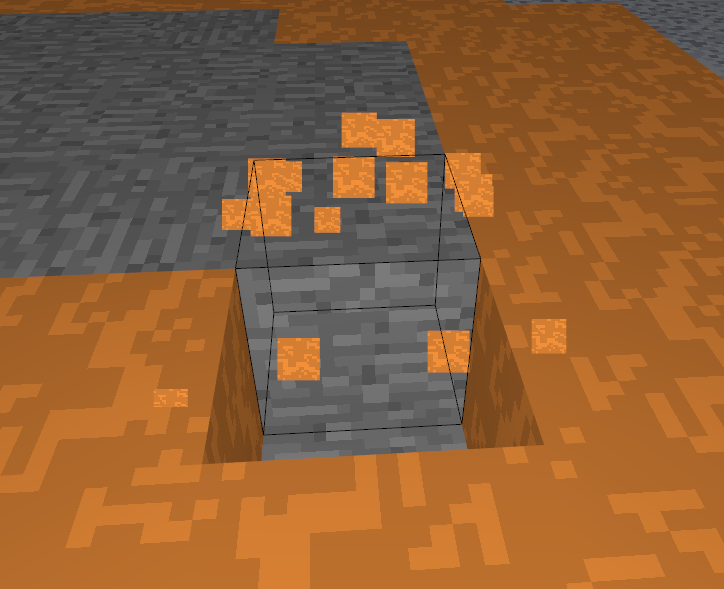
As you’ve probably noticed, soon I realized that I’m not a great artist.
I also got some nice features working:
- Flipping textures randomly to break patterns (See the 3rd image in the gallery above)
- GPU controlled particles
- FMOD integration
My version of GPU particles was very simple. basically I was using an old technique called Point Sprite:
- Set particles base location in uniform data
glEnable(GL_PROGRAM_POINT_SIZE);- Vertex shader: generate random movement with the
gl_VertexIDorgl_InstanceIDand setgl_PointSizedepending on the distance to the camera - Fragment shader: use
gl_PointCoordas texture uv gl_DrawArrays(GL_POINTS, 0, particleNum);orglDrawArraysInstanced(GL_POINTS, 0, particleNum, instanceNum);
I managed to get some sort of gameplay working, but it just didn’t feel very great, so I started to consider something else.
Version 5.0: Free Fall
I’ve been a fan of platforming games, so I started to make one myself. This time it worked much better and I got tons of interesting stuff working.
Skybox
I got the procedural skybox from glsl-atmosphere working and made a dynamic day-night system around it.
Distance attenuation (fog)
As the game map grew bigger, I realized that it was hard to tell the distance with flat lighting, so I added a simple fog to the game:
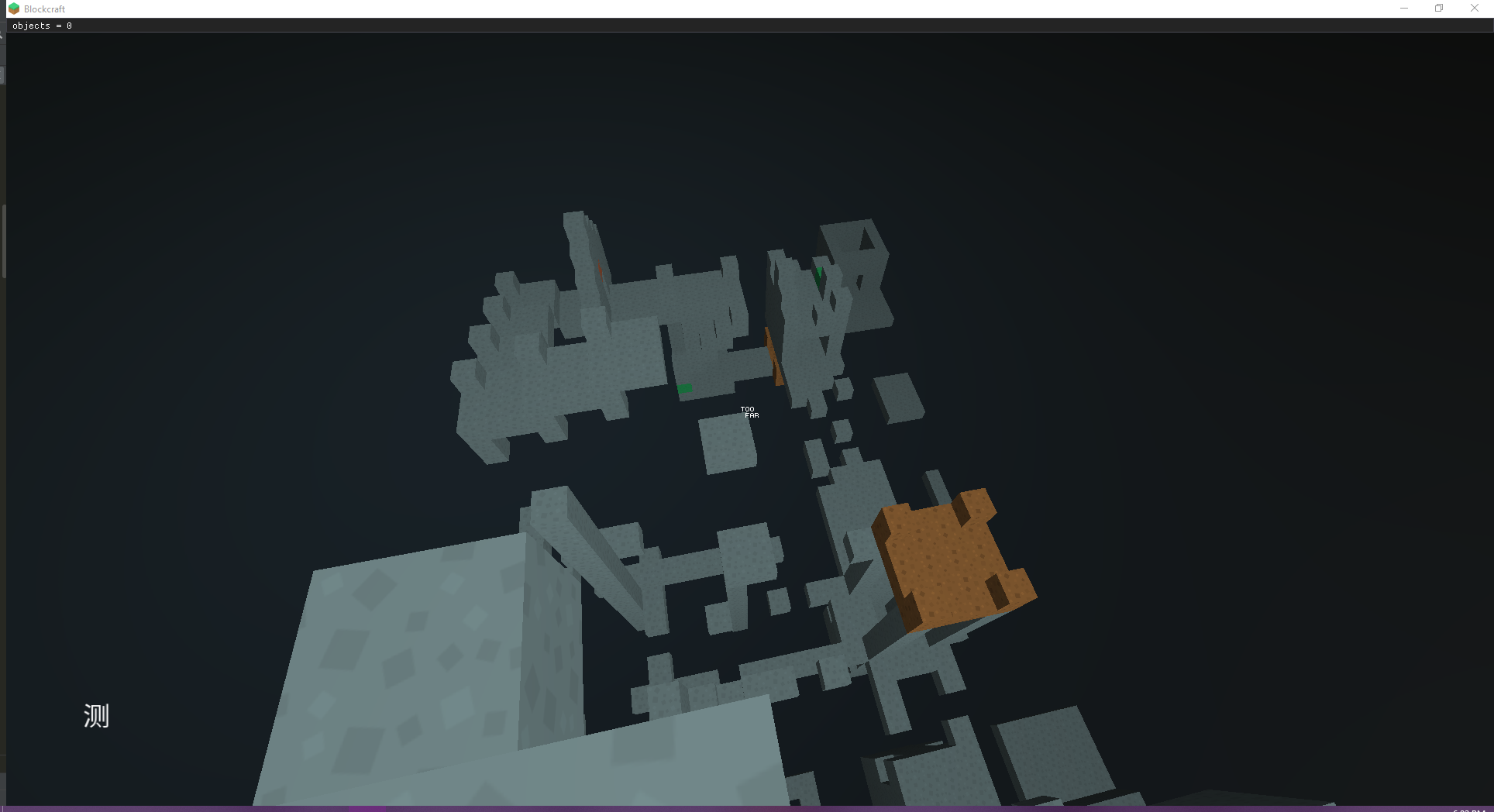
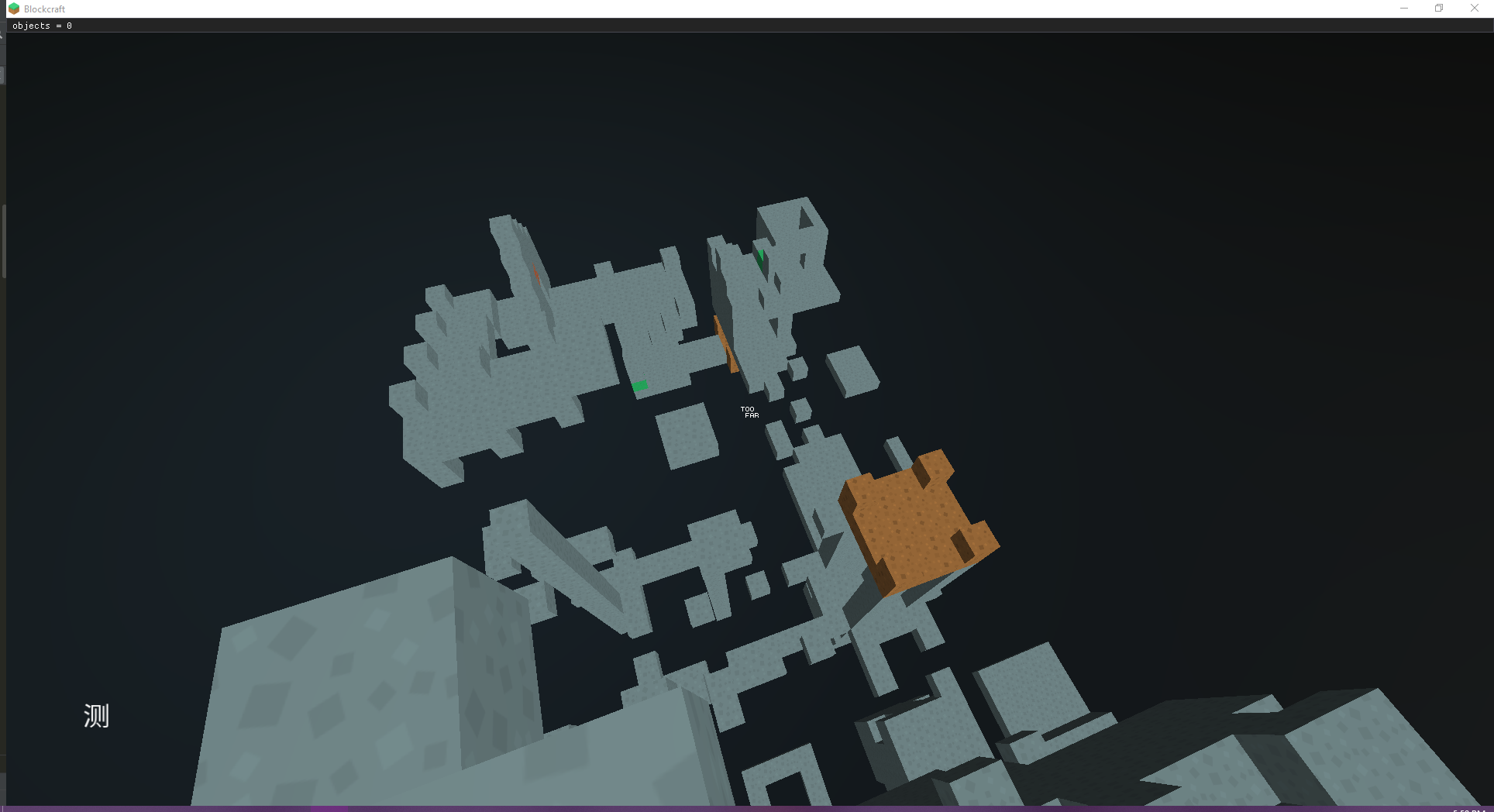
Level Editing
The level editor was actually a voxel modelling tool called MagicaVoxel. It’s a great tool and I’ve been playing with it for a while, so I started to consider using it as a level editing tool.
After studying the .vox file format, I wrote a parser to convert it into my own level format.
- Different color palette indices are mapped to different block types
- There are extra config files for entities (doors, buttons, checkpoints, etc.)
Version 5.1: A New Look
After a while I decided that Kenney’s textures was too dark (muddy?) with the fog, so I made a new minimalistic texture set myself.
This time I polished the platforming code and added stuff like coyote-time to the character controller.
Version 5.2: More game entities
This is the final version. I added more gameplay elements to the game.
This version also supports emissive textures (those icons on the blocks).
